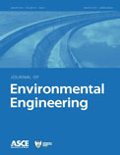
JOURNAL OF ENVIRONMENTAL ENGINEERING
Scope & Guideline
Advancing sustainable solutions for a resilient future.
Introduction
Aims and Scopes
- Water Treatment Technologies:
Research in this area covers various methods for treating water, including advanced oxidation processes, bioreactors, and membrane technologies. Studies often explore the efficiency of these technologies in removing contaminants such as heavy metals, pharmaceuticals, and pathogens. - Sustainable Waste Management:
This scope encompasses strategies for managing solid and liquid waste, including composting, anaerobic digestion, and bioremediation techniques. It emphasizes the recovery of resources and the minimization of environmental impacts. - Pollution Prevention and Control:
This area focuses on methods to prevent pollution at the source, including strategies for reducing emissions from industrial processes and urban runoff. Research often includes modeling and assessment of pollution control technologies. - Environmental Impact Assessments:
The journal publishes studies that evaluate the environmental impacts of various projects and policies, using quantitative and qualitative methods. This includes assessments of infrastructure projects, industrial activities, and urban development. - Climate Change Mitigation and Adaptation:
Research in this scope addresses the impacts of climate change on water and environmental systems and explores engineering solutions to enhance resilience. This includes studies on carbon capture, sustainable infrastructure, and adaptive management strategies. - Emerging Contaminants and Environmental Health:
This area investigates the presence and effects of emerging pollutants, such as PFAS and microplastics, in the environment. Research often focuses on detection methods, fate and transport modeling, and health risk assessments.
Trending and Emerging
- Advanced Materials for Water Treatment:
Recent publications highlight the use of novel materials, such as biochar and nanomaterials, for enhancing water treatment processes. This trend is significant as it addresses the need for more effective and sustainable methods to remove pollutants. - Digital Technologies and Modeling:
There is an increasing focus on the application of machine learning, artificial intelligence, and other digital technologies for modeling and optimizing environmental systems. This trend reflects the growing importance of data-driven approaches in environmental engineering. - Microbial Solutions and Bioremediation:
Research is increasingly emphasizing the role of microorganisms in environmental remediation and wastewater treatment. This includes studies on microbial fuel cells and bioaugmentation techniques, which leverage natural processes for pollution control. - Climate Resilience and Adaptation Strategies:
Emerging themes include the development of engineering solutions that enhance resilience to climate impacts, such as flooding and drought. Research in this area is crucial for sustainable urban planning and infrastructure development. - Integrated Water Resource Management:
There is a trend toward holistic approaches to water resource management that consider the interconnectedness of water systems, land use, and ecosystem health. This reflects a shift in focus towards sustainable and integrated environmental practices.
Declining or Waning
- Traditional Wastewater Treatment Methods:
There has been a noticeable decrease in studies focused on conventional wastewater treatment methods as researchers increasingly explore innovative and advanced technologies. This shift indicates a move towards more efficient and sustainable solutions. - Chemical Approaches to Pollution Control:
Research centered around purely chemical methods for pollution control is becoming less prominent, as there is a growing emphasis on biological and integrated approaches that offer more sustainable and environmentally friendly solutions. - Single-Discipline Studies:
The journal has seen a decline in publications that focus solely on one discipline without interdisciplinary approaches. There is a trend toward research that incorporates multiple disciplines, reflecting the complexity of environmental challenges.
Similar Journals
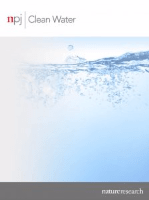
npj Clean Water
Connecting researchers to tackle water issues.npj Clean Water, published by NATURE PORTFOLIO, is a premier open-access journal dedicated to advancing the field of water science and technology. Since its launch in 2018, this innovative publication has quickly established itself as a leading platform for original research and policy discussions concerning clean water access and quality. With an impressive impact factor and categorized in the Q1 Quartile across multiple environmental science disciplines—including management, monitoring, pollution, and waste management—npj Clean Water stands out for its rigorous peer-review process and commitment to disseminating high-quality research. Researchers, professionals, and students involved in water-related challenges will find invaluable insights that address critical environmental issues and promote sustainable practices. Access to articles is freely available, encouraging global collaboration and knowledge sharing within the water sector. This journal embodies a significant step towards achieving innovation and policy advancements in the pursuit of a cleaner, safer water future.
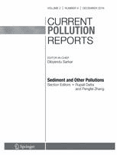
Current Pollution Reports
Unveiling Insights on Water Science and PollutionCurrent Pollution Reports, published by Springer Heidelberg, is an esteemed journal in the field of environmental science, focusing on the multifaceted aspects of pollution, waste management, and water science. With an impressive 2023 impact factor reflected in its status as a Q1 journal across multiple categories—including Management, Monitoring, Policy and Law, Pollution, Waste Management and Disposal, and Water Science and Technology—this journal stands at the forefront of environmental research and policy discourse. The journal, which has been in publication since 2015, aims to provide a platform for scholars and practitioners to share their findings, promoting the exchange of innovative ideas and effective solutions to pressing environmental challenges. With its rigorous peer-review process, Current Pollution Reports serves as an invaluable resource for researchers, professionals, and students committed to understanding and addressing pollution and its impacts on our planet.
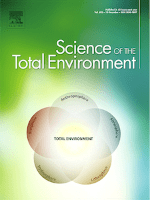
Science of The Total Environment
Driving Change Through Comprehensive Environmental ResearchScience of The Total Environment, an esteemed journal published by Elsevier, holds a significant position in the field of environmental science, encompassing critical areas such as Environmental Chemistry, Environmental Engineering, Pollution, and Waste Management and Disposal. With an impressive impact factor and ranked in the Q1 quartile across its categories for 2023, the journal is recognized for its high-quality research output and contribution to environmental sustainability. Operating from its base in the Netherlands, the journal has been a valuable resource since its inception in 1972, welcoming innovative studies that address complex environmental challenges. Its notable rankings—such as Rank #9 in both Environmental Sciences and Pollution—underscore its relevance and influence in the academic community. Although the journal currently does not provide an open access option, the robust findings and discussions presented within its pages continue to foster a deeper understanding of environmental issues. Science of The Total Environment is an essential platform for researchers, professionals, and students dedicated to advancing knowledge and solutions in the rapidly evolving field of environmental science.
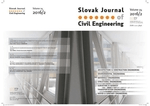
Slovak Journal of Civil Engineering
Exploring groundbreaking solutions in civil engineering.Welcome to the Slovak Journal of Civil Engineering, a premier open-access publication dedicated to advancing the field of civil engineering. Published by SCIENDO, this journal has been providing a platform for the dissemination of groundbreaking research since 2010, ensuring that all articles are freely accessible to a global audience. With a commitment to promoting innovation and excellence within civil engineering, the journal covers a wide range of topics, including structural engineering, transportation systems, geotechnics, and environmental engineering. The Slovak Journal of Civil Engineering is designed to engage a diverse community of researchers, professionals, and students, fostering collaboration and knowledge-sharing to address contemporary challenges in the field. With its open-access model, the journal not only enhances visibility for authors but also ensures that the latest findings and methodologies reach practitioners and academics alike, making it an essential resource for anyone interested in civil engineering advancements. Stay connected with the evolving landscape of civil engineering through this influential publication.
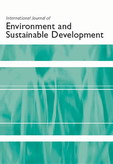
International Journal of Environment and Sustainable Development
Pioneering research in sustainability and development.The International Journal of Environment and Sustainable Development, published by INDERSCIENCE ENTERPRISES LTD, serves as a vital platform for researchers, practitioners, and policymakers engaged in the multidisciplinary fields of geography, renewable energy, and environmental sustainability. With an ISSN of 1474-6778 and an E-ISSN of 1478-7466, this journal has been disseminating critical research since its inception in 2002 and continues to expand its scope through 2024. Recognized within the Q3 quartile in Geography, Planning and Development and Q4 in both Management, Monitoring, Policy and Law and Renewable Energy, Sustainability and the Environment, it provides valuable insights into contemporary issues affecting our planet. While access options are limited to non-open access formats, the journal remains essential for those seeking to enhance their understanding of sustainable development practices and policies in a global context. The International Journal of Environment and Sustainable Development is not only an academic repository but also a catalyst for dialogue and innovation within the environmental sciences.
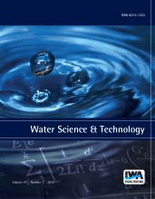
WATER SCIENCE AND TECHNOLOGY
Advancing sustainable solutions for a vital resource.WATER SCIENCE AND TECHNOLOGY, published by IWA PUBLISHING, is a leading academic journal dedicated to advancing the field of water science and technology. With a rich history dating back to 1970, the journal provides a platform for innovative research and technological advancements, catering to the vital challenges faced within the realms of environmental engineering and water resource management. As evidenced by its strong ranking in Scopus, where it holds a position of #86 in Water Science and Technology and #77 in Environmental Engineering, the journal exemplifies significant scholarly contributions, reflected in its Q2 quartile status in both categories as of 2023. Although not an open access journal, WATER SCIENCE AND TECHNOLOGY ensures that its articles are widely available to researchers, professionals, and students passionate about sustainable water solutions. With a continued commitment to excellence, this journal plays a crucial role in shaping the discourse surrounding water quality, conservation, and technology innovation, making it an essential resource for all stakeholders in this critical field.

CRITICAL REVIEWS IN ENVIRONMENTAL SCIENCE AND TECHNOLOGY
Leading the Way in Environmental Scholarship and InnovationWelcome to CRITICAL REVIEWS IN ENVIRONMENTAL SCIENCE AND TECHNOLOGY, an esteemed journal published by Taylor & Francis Inc. This journal has been at the forefront of environmental research since its inception in 1993, spanning a wide range of disciplines including environmental engineering, pollution control, waste management, and water science. CRITICAL REVIEWS holds an impressive Q1 ranking in multiple categories, including Environmental Engineering and Pollution, demonstrating its critical role in advancing knowledge within the field. With a remarkable Scopus ranking—placing it in the top 1% for Environmental Science categories—this journal serves as an invaluable resource for researchers, professionals, and students alike, providing comprehensive reviews and analyses that catalyze innovative solutions to pressing environmental challenges. Though currently not open access, the journal's content is accessible through various academic platforms, ensuring that cutting-edge research is available to a global audience. Join the community of scholars dedicated to enhancing our understanding of environmental science and technology through rigorous investigation and critical discourse.

Environmental Chemistry Letters
Empowering the next generation of environmental scientists.Environmental Chemistry Letters, published by Springer Heidelberg, stands at the forefront of interdisciplinary research within the field of Environmental Chemistry. Since its inception in 2003, this esteemed journal has provided a dynamic platform for the dissemination of innovative studies and groundbreaking findings, contributing significantly to the understanding of chemical processes affecting the environment. With an impressive impact factor and ranking third out of 147 journals in Environmental Chemistry (98th percentile as per Scopus), it consistently attracts high-quality submissions from researchers around the globe. The journal maintains a Q1 category rank as of 2023, underscoring its prominent position in scholarly discourse. Environmental Chemistry Letters is dedicated to advancing knowledge on contemporary environmental issues, fostering solutions to mitigate chemical pollution, and promoting sustainable practices across various sectors. Researchers, professionals, and students alike will find invaluable resources within its pages as it continues to illuminate the path toward environmental sustainability.

CANADIAN JOURNAL OF CIVIL ENGINEERING
Building the Future Through Research and DevelopmentCanadian Journal of Civil Engineering, published by Canadian Science Publishing, serves as a premier platform for the dissemination of innovative research and development in the fields of civil and structural engineering, as well as environmental science. Established in 1971, this journal maintains a robust reputation, achieving a Q3 ranking in both civil engineering and general environmental science categories as of 2023. While it does not currently offer open access, the journal is accessible to a wide audience of researchers, professionals, and students who are keen to stay abreast of the latest advancements in civil engineering practices. With a significant number of yearly publications and a committed editorial board, the Canadian Journal of Civil Engineering contributes to the foundational knowledge and practical applications in the engineering community, thereby playing a critical role in addressing contemporary challenges in civil infrastructure and environmental sustainability.

Environmental Sciences Europe
Bridging science and policy for a sustainable planet.Environmental Sciences Europe is a leading peer-reviewed journal published by SPRINGER, dedicated to advancing research in the field of environmental science, with a specific focus on pollution and its mitigation. Since its transition to Open Access in 2011, the journal has been committed to disseminating high-quality research without barriers, thereby ensuring that critical knowledge is freely accessible to researchers, practitioners, and policymakers around the globe. Based in Germany and with a commendable Q1 ranking in Pollution for 2023, the journal stands out in the Scopus rankings, occupying the 23rd position out of 167 in its category, reflecting its significant impact in shaping environmental discourse. With a convergence of global research efforts projected until 2024, Environmental Sciences Europe aims to provide a vital platform for scholarly communication and collaboration, ultimately contributing to sustainable solutions for pressing environmental challenges.